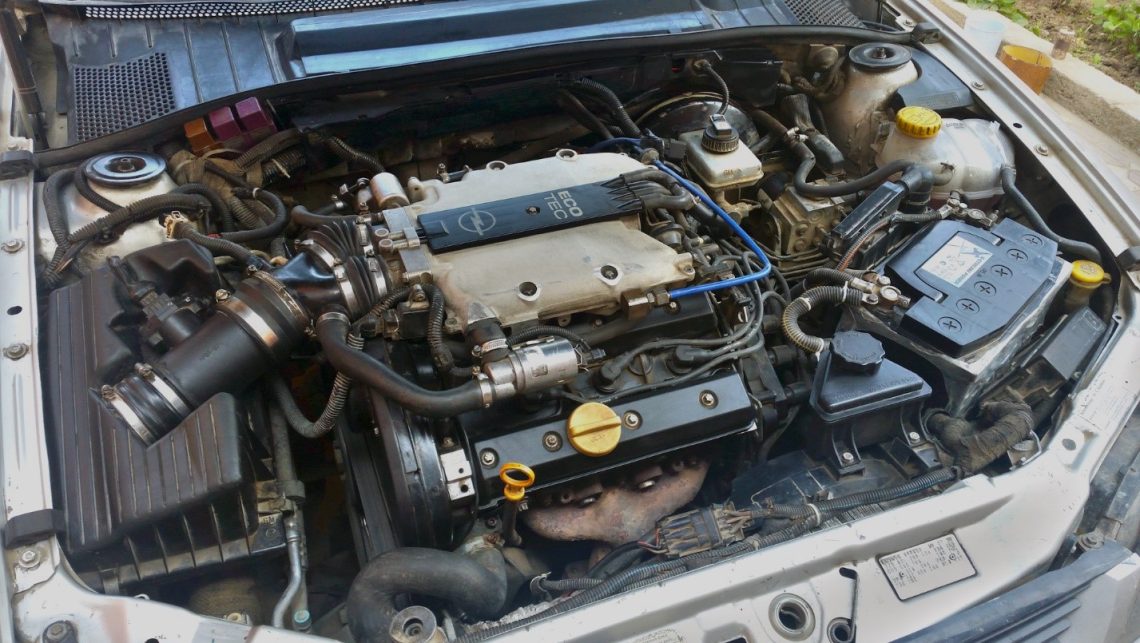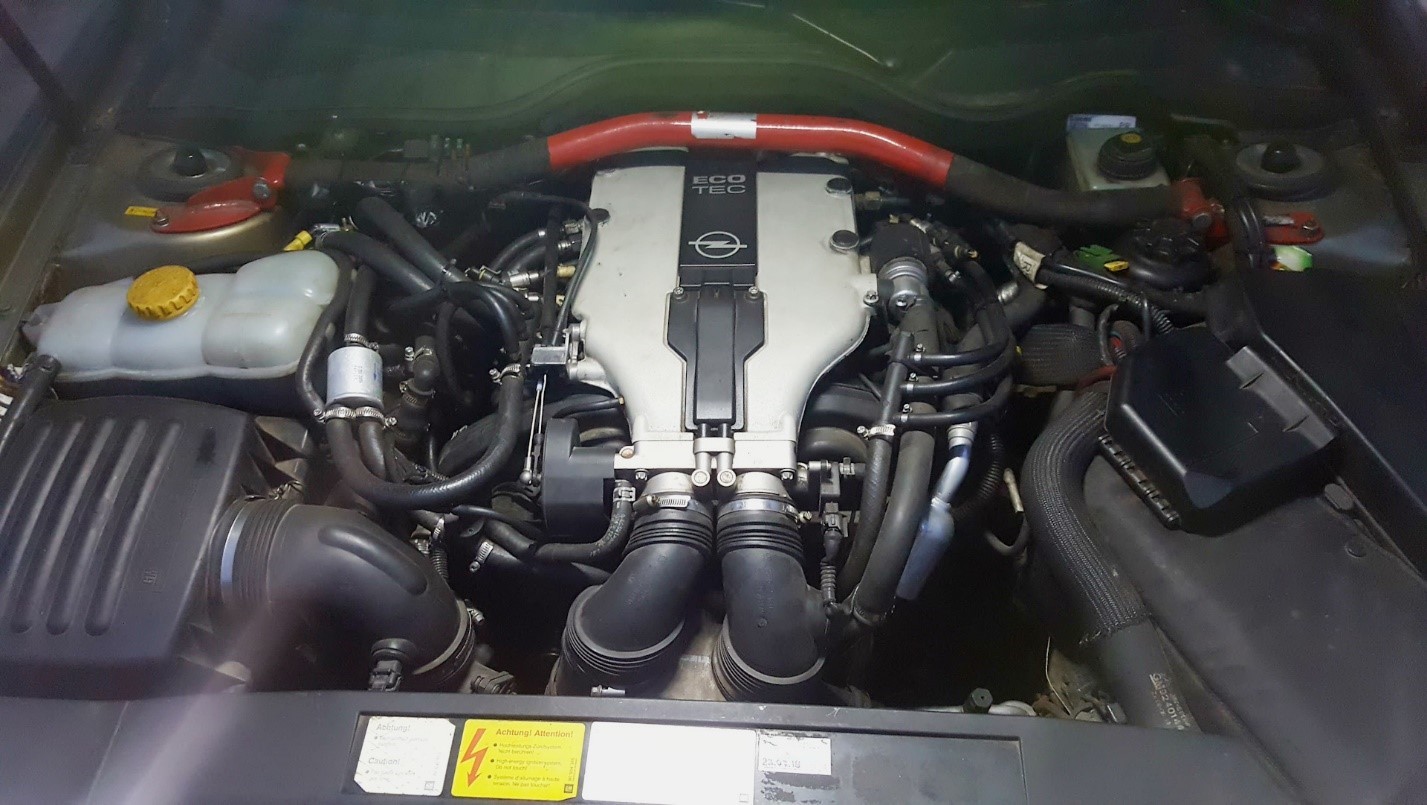
Opel X30XE engine
Content
In 1994, at the Vauxhall Ellesmere Port plant in Luton (Great Britain), a three-liter power unit under the factory marking X25XE was put into mass production based on the X30XE engine.
The cast-iron BC Х30ХЕ in terms of external dimensions remained almost the same as that of the X25XE, but inside there was an increase in working volume. In order for all the modified parts and assemblies to fit in the new block, the cylinder diameter became 86 mm. A long-stroke crankshaft was also installed (with a piston stroke of 85 mm) and connecting rods, 148 mm long. The distance between the piston crown and the midpoint of the piston pin axis, as well as the compression ratio, remained the same - 30.4 mm and 10.8 units, respectively.
Similar X25XEs were installed on top of the power plant, but adapted to the modified block, a cylinder head with two camshafts. The intake and exhaust valve diameters in the X30XE were borrowed from the X25XE - 32 and 29 mm, respectively. The thickness of the poppet valve guide is 6 mm.

The power drive of the camshafts is carried out by a toothed belt. The intake manifold is with variable section Multi Ram. Nozzle performance - 204 cc. X30XE is controlled by the Bosch Motronic M 2.8.3 ECU.
Specifications X30XE
In 1998, the X30XE underwent minor modifications. The intake manifold and channels were improved, and the control unit was reconfigured, which made it possible to increase engine power to 211 hp.
At the same time, the production of a power plant began under the serial number X30XEI (this engine is found on a rather rare Opel model - the Vectra i30), which differed from the X30XE in camshafts, exhaust and ECU firmware. As a result of both modifications, the power of the X30XEI increased to 220 hp.
| Key Features of X30XE | |
|---|---|
| Volume cm3 | 2962 |
| Max power, hp | 211 |
| Max torque, Nm (kgm)/rpm | 270 (28) / 3400 |
| 270 (28) / 3600 | |
| Fuel consumption, l / 100 km | 9.6-11.3 |
| Type | V-shaped, 6-cylinder |
| Cylinder diameter, mm | 86 |
| Max power, hp (kW)/r/min | 211 (155) / 6000 |
| 211 (155) / 6200 | |
| Compression ratio | 10.08.2019 |
| The piston stroke, mm | 85 |
| Models | Opel Omega B, Vectra B i30, Sintra/Cadillac Catera/Saturn L, Vue |
* The internal combustion engine number is located at the place of its connection with the gearbox (if in the direction of the car, then on the left side).
In the US, the X30XE engine is known as the Chevrolet L81, which was installed in the Cadillac Catera (adapted for North America version of the Omega B). Also, the L81 can still be found under the hoods of the Saturn Vue and Saturn L. The first Swedish business class car, the SAAB 9000, was also equipped with an analogue of the X30XE unit, the B308I.
In 2001, Opel replaced the X30XE with the Y32SE engine.
Features of operation and typical malfunctions of the X30XE
Almost all of the weak points of the three-liter X30XE engine are similar to its predecessor, the X25XE, and are mainly related to oil leaks.
pros
- Power.
- Maintainability.
- Motor resource.
Cons
- Oil leaks.
- Oil in antifreeze.
- The location of the oil receiver.
Oil leaks and its entry into the candle wells most likely indicate a worn cylinder head gasket. By the way, when replacing the valve cover gasket, you can clean the crankcase ventilation system.

Malfunctions in the crankcase ventilation system can lead to increased oil consumption and even the need for engine overhaul, so it should be cleaned regularly.
If traces of oil are found in the coolant, then there is a high probability that the problem is in the heat exchanger in the collapse of the block. The oil cooler of this engine leaks frequently.
It is well known that even the slightest deformation of the X30XE engine sump can cause damage to the oil receiver. With its partial or complete blocking, the consequences can be very sad. If the oil pressure lamp lights up, first of all it is worth checking the pan and, if necessary, replacing it, or restoring it to factory condition.

The service life of the timing belt installed on the X30XE is no more than 60 thousand kilometers. It is better to do the replacement on time, otherwise the irreparable may happen - the X30XE always bends the valve.
Other than that, the X30XE is a fairly conventional V6 unit. Under the conditions of regular maintenance, when using original parts in the repair, operating on branded engine oil and high-quality gasoline, its resource will easily exceed the mark of 300 thousand km.
Tuning X30XE
In general, there are few rational, or rather affordable, options for increasing the power of the X30XE power plant. In addition, this is not the most profitable occupation. All that can be done from a reasonable point of view is to remove the catalysts and do a chip tuning. This will allow you to get on top of the already available 211 hp. up to 15 hp, which during normal driving will not even be noticeable.
In the case of tuning the X30XE, the best option would be to abandon the modifications and purchase a more powerful car.
But if you still really want to make this particular engine faster, then you can still try to install a cold air intake, a lightweight flywheel and adjust the control unit. Perhaps this will add another 10-20 hp. on the flywheel. Building an even more powerful device on the basis of the X30XE would be too costly.
Conclusion
The X30XE engines differ from many modern V6 units in that they have a 54-degree cylinder head angle, as opposed to conventional 60-degree powerplants. This added to the compactness of the X30XE, which was necessary to allow the engine to be used in both front and rear wheel drive vehicles.
As for winter operation, which is relevant in the conditions of the Russian Federation, it can be said about the X30XE that it does not “like” hard frosts and it will have problems starting at low temperatures.

